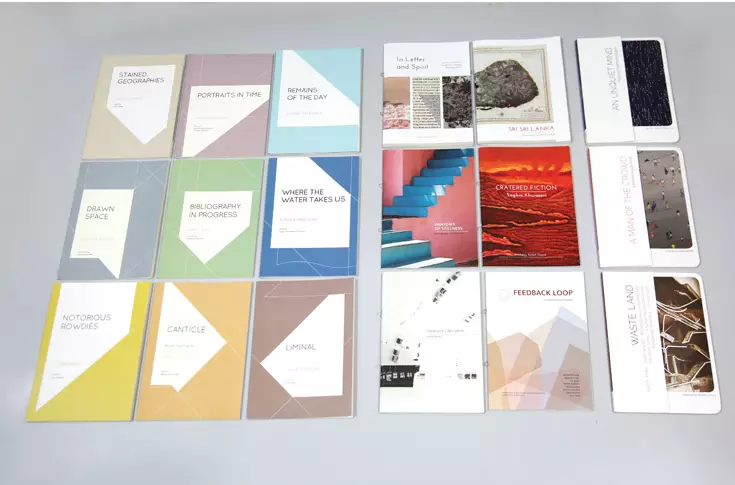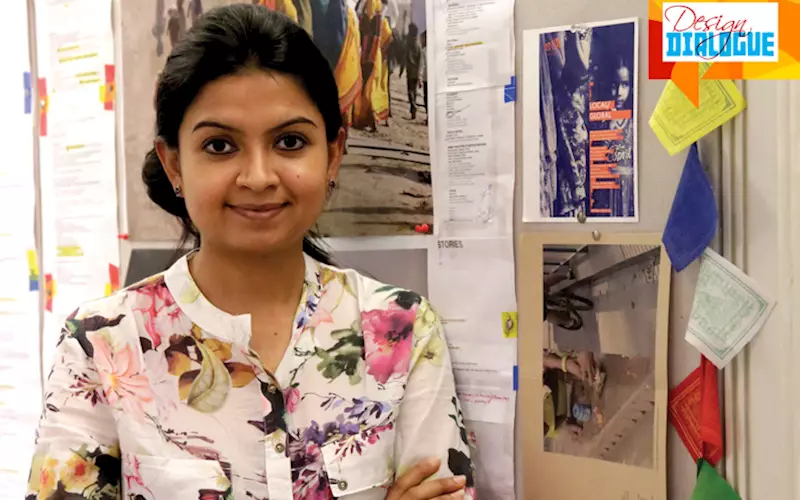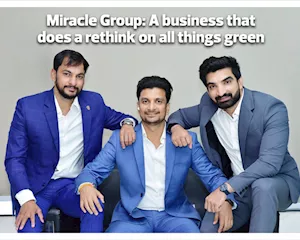Deshna Mehta: “As designers, I see our role as facilitators more than creators”
PrintWeek India talks to the co-founder of Mumbai-based Studio Anugraha about their journey so far.
16 Nov 2018 | By PrintWeek India
We speak to Deshna about her design education, the inception of her studio, her love for publication design, some of the key projects including the ‘Kumbh Mela’ that they have been working on since the last six years now, and her vision for the future. Edited excerpts:
Could you tell us a bit about your design background?
I studied Applied Art at Sir JJ Institute of Applied Arts. After that, I worked in advertising at JWT for about six months and realised that wasn’t really my space, so I decided to study further. I went on to do my Masters in Graphic Design at the London College of Communication (LCC). While studying at LCC, I was fortunate enough to be mentored by Michael Wolff (designer) in London. He told me that if I really wanted to explore myself, I should consider going to the Royal College of Art (RCA).

So I spent two years at the RCA, doing a masters in visual communication. RCA was a very interesting experience; we had over 20 different nationalities in one room and diverse age groups and experiences. I feel that RCA’s approach to the Masters was to either go deeper into what you know or do something from scratch. The latter resonated with me more as I wanted to unlearn and then see what I could do. I ended up doing a lot of research, writing, curation and installations while I was at the RCA.
How did Studio Anugraha come into being after that?
I returned in 2012, right after I graduated. The studio is intrinsically connected to my dissertations at LLC and RCA. At LLC, I compared the cultural landscapes of River Thames in London and River Ganges in Varanasi. I visited both the landscapes and documented them into five visual books and a written report.
Then at RCA, I had an existential crisis of sorts and was encouraged by my tutors to use that as a self-brief to find meaning which culminated into my dissertation. At this time, I got introduced to a lot of iconic communication, product, industrial designers and engaged with design history.

Through that process, the most important thing I learnt was how design emerged and therefore the zone of ‘design by default’ and its value stuck with me. As designers, I see our role as facilitators more than creators. And this became an important part of our process and philosophy at Studio Anugraha. I started thinking ‘can I do something in my practice that can facilitate the causes I care about?’
Then the current patron for our Kumbh Mela books, who I was freelancing for even while I was in London, saw my dissertation work on the rivers and suggested that we document the Kumbh, so that led to the inception of Anugraha and our first project which still continues even today.
You work with two other partners. How did you all come together?
Leena Mehta is my aunt, and she has been running her own design studio, Omniscient Communications, since the last 15 years, and Deven Shah is her partner in the studio. They are more into designing brochures for the real estate sector. When I told them about my vision after I came back, the idea resonated with them.
And their background - Leena is academically a CA and Shah specialises in print and production - was perfect to complement my skills to run a studio. It was their willingness to see value in my thoughts and invest in them that allowed for the manifestation of Anugraha.
Could you tell us more about the Kumbh project? What all have you done under it so far?
We went for the first Kumbh in 2013 to document it, and the first sets of books were published in 2015. Our initial commission was to do one book, but we came back with so much material after being on the field for two months and eventually ended up creating eight extensive books and a documentary.
The Allahabad Kumbh’s launch was in July 2015 at the Nehru Centre, with an exhibition and a three-day event. We also documented the Nashik-Trimbakeshwar Kumbh of 2015 and the Ujjain Kumbh of 2016. Currently, the Nashik books (four volumes) are in a dummy stage and we are also working on the Ujjain book.
The Nashik documentary is ready for release. Smaller deliverables like calendars, cards, invites, brochures, handouts are constantly being produced with the Kumbh visuals to support the many events we engage with on the subject.

The Kumbh has also branched out into various exhibitions, the most recent one being a group show at NGMA, Mumbai in February this year. Then we became a part of the Venice Biennale where Rahul Mehrotra (chair of the department of urban planning and design at the Harvard GSD) led the Harvard contingent which came and studied the Kumbh and published a book on it.
For the exhibition at the Biennale, they got in touch with us for people-centric footage as our documentation was very anthropological. It complemented what they had and became a small part of their exhibit in Venice.
We were also a part of the Goa International Photo Festival in 2015 where the theme was ‘Faith’. And we were a part of a conference called ‘Cumulus’ hosted by IDC-IIT, for which the theme was water and sustainability. So Kumbh as a body of work has a lot of entry points as it has so many aspects to it. We will complete the loop on Kumbh with Haridwar. It’s been an incredible journey so far, and we have got many projects and met many people through it.
You have an ongoing collaboration with Tarq gallery. Tell us a bit about how the collaboration works.
I met Hena Kapadia (founder, Tarq) at a workshop themed around the format of a ‘book’ at the gallery. At that time, she had been working with different people for different catalogues, but she wanted to establish the gallery’s own unique language.
In terms of the collaboration, we don’t really work with the artist. Kapadia was clear from the beginning that the language of the invites, posters and catalogues would be established for the gallery, and not for individual artists. Every year, we also change the format of the catalogues. There are about seven to eight shows each year, and we think about the collation of all the catalogues at the end of the year. So once we created a folder at the end, once a box-set, and so on. We always think long-term while designing them, but within that parameter, we still play around with the layout.

Tarq is now our constant client, so there is a great amount of comfort level. Everything is always well-planned and scheduled. We also manage the printing and production for the catalogues. Hena’s clarity and her belief in our design skills which comes with a lot of creative freedom have helped establish a great rapport with her and the team at Tarq.
What attracts you to publication design personally?
I trace it back to my masters at LCC where all our submissions were mostly in the form of books. Even for branding projects, we had to do process books, so I ended up doing 15 books in that one year. I personally really enjoyed the process.
At Anugraha, we don’t generate quick deliverables as we like to think through and dig deeper, whether it’s content or design, and the publication format allows that. I also like creating something tangible, with hands.
What are some of your ongoing projects right now?
Tarq is an ongoing project. We have also been working for Dr Shraddha Shah who is a homoeopath and is also into alternative healing. She creates fiction derived from medical case studies. We are currently designing a book she has done. We have also worked with her in the past on another book and brochures for her practice and workshops.
We are working with a group called The Narrators, who have been commissioned by Barclays to create a book on the second generation entrepreneurs, who have inherited big businesses. The book is about their work processes, belief system, and values. We are working with them on the visual narrative and design of the book.
We have also recently worked on a book on one of the houses designed by the architect Nari Gandhi in Lonavala for Mrs Usha Jain (the house owner). The book was supposed to be a personal gift but since it is all about the making of the house and we have a lot of material from people related to Nari Gandhi, it might be published for wider access. This is a project that again came to us through The Narrators who have worked on the content for the book.

Then we worked with this group called Detour Odisha which is about tourism but from a cultural perspective. We have worked on their branding and brochures for culturally rich spaces in Bhubaneshwar - delving deeper into the stories, exploring alternate trails. Another client we work with is the Currystone Foundation which operates in an interesting space between an NGO, a deep understanding of architecture, and also a source of funding social and cultural initiatives.
The upcoming Allahabad Ardh Kumbh in 2019 and UNESCO’s declaration of the Kumbh as part of the World Intangible Heritage earlier this year have generated a lot of interest in the Kumbh work we have been doing. We just spoke about the project at the ‘Smart Cities Art Cities’ conference by Avid Learning and FICCI. We are exhibiting and speaking at the Bursa International Photography Festival in Turkey (September- October 2018). We are also taking this work to the World Living Heritage Festival in Udaipur in October 2108.
We have had all this work, but we have been so immersed in it so far. However, we are beginning to take it out into the world now and are grateful for the many platforms and opportunities that are coming our way.
How has your vision for Studio Anugraha evolved over the years?
I was always clear that I wanted to do this but it was also a bit idealistic I think, so it hasn’t always been easy. Since we mostly work with the social and cultural sector, most of our clients have small budgets. Monetarily, it’s been quite challenging.
However, I have been fortunate with my team who believes in this vision, and that’s how we are able to sustain. And we have the privilege of not having big families to take care of, so we can afford to do this. We also get involved in print deliverables so that gives us a decent margin.

Also, it’s not like we have been puritans about not working for consumerism (although that is a strong intent). For example, we work with Tarq, and buying art can be called consumerism. However, the motivation is that it supports artistic exploration and processes. However, I still know that I don’t want to work for mainstream consumer brands/products. I am actually considering scaling down a bit eventually to be able to continue with the same philosophy as I still find meaning in that.
Personally, I have also been doing teaching stints at NID and a few other places in India for quite some time. I want to focus on that more since the studio is quite set right now, and teaching gives me the opportunity to learn again.
Payal Khandelwal is an independent journalist and editor of The Floating Magazine (thefloatingmagazine.com)














 See All
See All